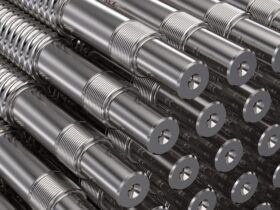Did you know valves are essential in transportation and energy? They help to control and temper different types of flow. Because of their importance, maintenance and replacement of valves must be done consistently.
There are different types of valves, so it can be helpful to know each one and how it can benefit the industry you work in. Continue reading to learn more about valves and the different types there are.
Butterfly Valves
Butterfly valves are one type of valve used for controlling the flow of liquids and gases. Butterfly valves get their name from the butterfly-shaped disc that rotates to open and close the valve.
Butterfly valves are used in various applications, including food and beverage processing, pharmaceutical manufacturing, and water treatment.
Ball Valves
Ball valves are simple to operate and can control the flow of liquids or gases in a pipeline. When the ball is in the open position, the flow is unobstructed. When the ball is in the closed position, the flow is blocked.
Ball valves are available in a variety of sizes and pressure ratings.
Gate Valves
One of the most popular types of valves is the gate valve. Gate valves are very versatile and can be used in various applications.
Gate valves are available in both manual and automated valves. Manual gate valves are easier to operate but require more frequent maintenance. Mechanical valves are more expensive but require less maintenance.
Check Valves
A check valve is a mechanical device that allows fluid to flow in one direction. Check valves are used in various applications, including pumps, oil and gas pipelines, and water treatment plants.
In addition, disk check valves consist of a disk mounted on a hinge. When fluid flows in the correct direction, the disk is pushed out of the way, and fluid flows through the valve. When fluid flows in the wrong direction, the disk is pushed into the valve and blocks fluid flow.
Diaphragm Valves
Diaphragm valves are one type of valve often used when a tight seal is required. Diaphragm valves have a flat, flexible disk that separates the two sides of the valve. When the valve is opened, the diaphragm moves out of the way so that fluid can flow through the valve.
For more info, check out control valves modulation.
These Are the Different Types of Valves Available in the Market Today
When choosing the suitable types of valves for your needs, it is essential to consider the appropriateness of the valve for the application, the media that will be passing through, the operating conditions, and the required degree of control.
With so many variables to consider, it is best to consult a knowledgeable engineer to ensure that you select the best valve for your application.
If you’re still looking for more great advice on ideas, keep scrolling through our blog for more now.










